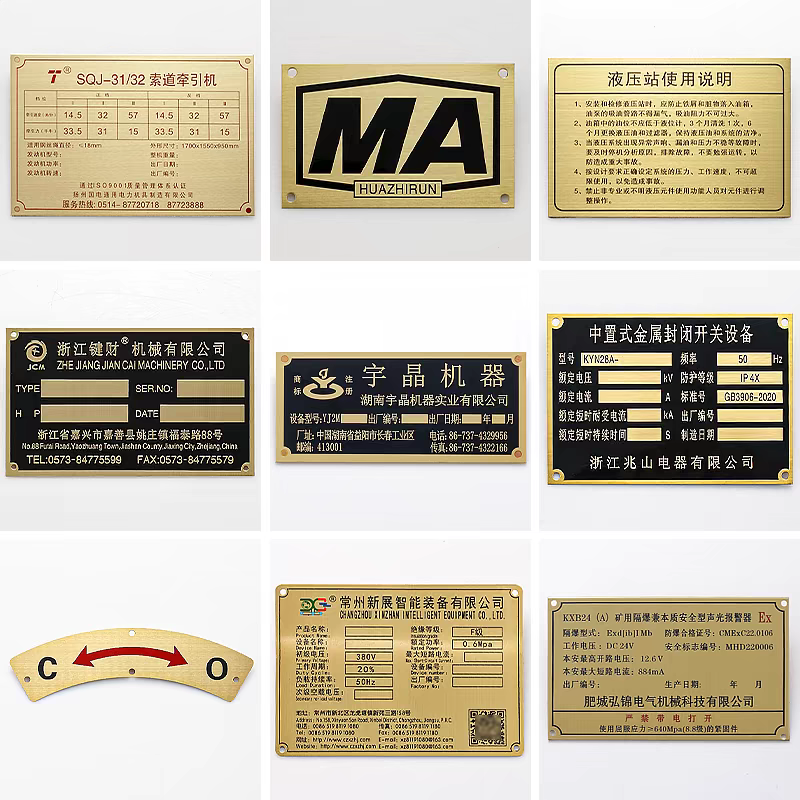In today’s competitive business landscape, managing physical assets efficiently is no longer a luxury—it’s a necessity. Whether you’re overseeing IT equipment, machinery, office furniture, or tools, the ability to track, monitor, and maintain these items can make or break your operational efficiency. This is where asset tags with barcodes come into play. These simple yet powerful tools have revolutionized how organizations handle asset management, offering a blend of simplicity, accuracy, and scalability. If you’re considering adopting this technology or looking to optimize your current system, you’ve come to the right place. This article dives deep into the practical aspects of using asset tags with barcodes, covering everything from selection to implementation, without the fluff you might find in generic guides.

What Are Asset Tags with Barcodes and Why Do They Matter?
At their core, asset tags with barcodes are physical labels attached to assets, each featuring a unique barcode that can be scanned to retrieve detailed information about the item. Think of them as digital fingerprints for your equipment. The barcode—often a linear or 2D format—encodes data such as asset ID, purchase date, location, and maintenance history. When scanned with a barcode reader or smartphone, this data integrates seamlessly with asset management software, providing real-time insights.
The importance of asset tags with barcodes extends beyond mere identification. In industries like manufacturing, healthcare, education, and retail, they help prevent loss, reduce theft, streamline audits, and cut down on manual errors. For instance, a hospital using barcode asset tracking can quickly locate critical medical devices during emergencies, while a warehouse can maintain accurate inventory levels without tedious manual counts. By embedding asset tags with barcodes into your processes, you’re not just tagging items—you’re building a foundation for smarter decision-making.
Key Benefits of Using Asset Tags with Barcodes
The adoption of asset tags with barcodes brings a host of advantages that directly impact your bottom line. Here are some of the most significant benefits:
Improved Accuracy and Reduced Human Error: Manual data entry is prone to mistakes, but scanning barcoded asset tags ensures near-perfect accuracy. This is crucial for financial reporting and compliance audits.
Time and Cost Savings: With asset tags with barcodes, tasks like inventory checks or asset audits that once took hours can now be completed in minutes. This efficiency translates into lower labor costs and fewer disruptions.
Enhanced Asset Visibility: You’ll always know where your assets are, their condition, and who’s using them. This visibility helps in scheduling maintenance, planning replacements, and avoiding unnecessary purchases.
Scalability and Flexibility: As your business grows, asset tags with barcodes can easily scale to cover new assets. They’re compatible with various software systems, making integrations smooth.
Theft Deterrence and Loss Prevention: Visible barcode labels act as a deterrent, while tracking capabilities make it easier to recover stolen or misplaced items.
These benefits highlight why asset tags with barcodes are a cornerstone of modern asset management strategies. They’re not just about tracking—they’re about transforming how you manage resources.
How to Choose the Right Asset Tags with Barcodes for Your Needs
Selecting the appropriate asset tags with barcodes can be daunting, given the variety of options available. Here’s a practical approach to help you make an informed decision:
Assess Your Environment and Asset Types: Start by evaluating where the tags will be used. For harsh environments—like outdoor sites or factories—opt for durable asset tags with barcodes made from materials like polyester or metal, which resist moisture, chemicals, and abrasion. For office settings, standard vinyl or paper tags might suffice.
Consider Barcode Technology: Linear barcodes (e.g., Code 128) are common and cost-effective for basic tracking, but 2D barcodes (e.g., QR codes) can store more data and are easier to scan with mobile devices. If you need to capture detailed asset histories, 2D barcoded asset tags are worth the investment.
Evaluate Adhesive and Attachment Methods: The longevity of asset tags with barcodes depends on how well they stick. For permanent placement, use strong adhesives or epoxy coatings. For reusable assets, consider tamper-evident tags that show signs of removal.
Check Compatibility with Your Systems: Ensure the barcode asset tracking software you use supports the barcode symbology and data format. Test a sample tag with your scanners to avoid integration issues.
Factor in Customization and Budget: Custom asset tags with barcodes can include logos, serial numbers, or color-coding for better organization. Balance customization with cost—bulk orders often reduce per-tag prices.
By focusing on these aspects, you’ll choose asset tags with barcodes that align with your operational needs and budget constraints.
Step-by-Step Guide to Implementing Asset Tags with Barcodes
Implementing asset tags with barcodes doesn’t have to be complicated. Follow these five steps to ensure a smooth rollout:
Conduct an Asset Audit and Planning: Begin by cataloging all assets that need tagging. Identify critical items and prioritize them. Draft a plan that outlines timelines, responsibilities, and the scope of the project. This initial step ensures you don’t overlook essential assets when deploying barcoded asset tags.
Select and Procure the Tags: Based on your needs analysis, order a batch of asset tags with barcodes. Work with a reputable supplier to ensure quality—request samples if possible. Verify that the tags meet durability and readability standards for your environment.
Prepare Your Asset Management System: Configure your barcode asset tracking software to accommodate the new tags. Set up fields for asset details, such as description, location, and status. Train your team on using the system and scanners to minimize learning curves.
Tag Assets and Input Data: Physically attach the asset tags with barcodes to each item, ensuring they’re placed in visible, accessible spots. Scan each tag to input initial data into the system. Double-check entries for accuracy to avoid future discrepancies.
Monitor and Optimize the System: After implementation, regularly review the system’s performance. Use reports generated from asset tags with barcodes to identify trends, such as frequent maintenance needs or underutilized assets. Update the system as your asset portfolio evolves.
This structured approach minimizes disruptions and maximizes the ROI of your asset tags with barcodes investment.

Common Mistakes to Avoid When Using Asset Tags with Barcodes
Even with the best intentions, pitfalls can undermine the effectiveness of asset tags with barcodes. Here are some common errors and how to sidestep them:
Skipping Environmental Testing: Don’t assume all tags will hold up in your setting. Test asset tags with barcodes in real-world conditions—exposure to heat, cold, or chemicals can degrade adhesives or barcode readability.
Neglecting Staff Training: If employees aren’t comfortable with the technology, they might bypass it. Provide hands-on training for scanning and data entry related to barcoded asset tags to foster adoption.
Overlooking Data Hygiene: Inaccurate or outdated data in your barcode asset tracking system can lead to poor decisions. Schedule regular audits to clean up records and update asset statuses.
Choosing Price Over Quality: Cheap asset tags with barcodes might save money upfront but could fail prematurely, costing more in replacements and downtime. Invest in reliable tags that match your longevity requirements.
Failing to Plan for Growth: Your asset base will change. Ensure your asset tags with barcodes and software can handle additions without requiring a complete overhaul.
By avoiding these mistakes, you’ll maintain the integrity of your asset management system and reap long-term benefits from asset tags with barcodes.
Future Trends in Asset Tracking with Barcodes
The world of asset tags with barcodes is evolving, driven by technological advancements. While barcodes remain a staple, innovations like IoT sensors and AI integration are enhancing their capabilities. For example, hybrid systems combine barcoded asset tags with RFID for broader coverage, while cloud-based platforms enable remote tracking via mobile devices. As sustainability gains emphasis, expect more eco-friendly asset tags with barcodes made from recyclable materials. Staying informed about these trends can help you future-proof your asset management strategy.
In conclusion, asset tags with barcodes are a practical, cost-effective solution for modern asset management. By understanding their benefits, choosing wisely, and implementing them methodically, you can streamline operations and boost productivity. Remember, the goal isn’t just to tag assets—it’s to unlock insights that drive your business forward.
Frequently Asked Questions (FAQs)
Q1: What exactly are asset tags with barcodes, and how do they differ from regular labels?
A1: Asset tags with barcodes are specialized labels designed for tracking physical assets. Unlike regular labels, they include a unique barcode that, when scanned, links to a database containing detailed asset information such as serial numbers, maintenance history, and location. This enables automated data capture and reduces manual errors in asset management.
Q2: Can asset tags with barcodes be used in outdoor or harsh environments?
A2: Yes, many asset tags with barcodes are engineered for durability in challenging conditions. Options include metal tags, polyester labels with protective laminates, or epoxy coatings that resist water, UV rays, and chemicals. It’s important to select tags rated for your specific environment to ensure longevity and scan reliability.
Q3: How long does it typically take to implement a system using asset tags with barcodes?
A3: The implementation timeline varies based on the scale of your asset portfolio and preparation. For a small to medium-sized business, it can take a few weeks to months, including planning, tag procurement, data entry, and staff training. A phased approach—starting with high-value assets—can speed up the process while minimizing disruption.
Q4: Are there any ongoing costs associated with maintaining asset tags with barcodes?
A4: While the initial investment covers tags, scanners, and software, ongoing costs may include software subscriptions, replacement tags for damaged or new assets, and occasional hardware updates. Regular maintenance, such as data audits and system backups, also contributes to long-term costs but is essential for optimal performance.
Q5: Can I integrate asset tags with barcodes with existing management software?
A5: Absolutely. Most modern asset tags with barcodes are designed to be compatible with a wide range of asset management or ERP systems through APIs or standard data formats. It’s advisable to check compatibility during the selection process and work with your software provider to ensure smooth integration.






